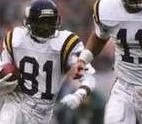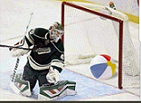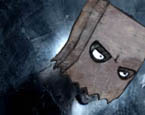kwheats
Posts: 2625
Joined: 2/28/2009
From: NORTHERN MINNESOTA
Status: offline

|
Vikings should put cap space, draft picks into skill positions over offensive line
By Matthew Coller | @MatthewColler
January 6, 2019 10:48 am
After Blair Walsh shanked a 27-yard field goal wide left in a frigid TCF Bank Stadium and the Minnesota Vikings’ season came to an end, every Vikings fan would have told you that the key to a strong 2016 season was fixing the offensive line.
The team’s front office agreed. So they went on the prowl for a starting left guard and right tackle and landed Alex Boone on a four-year, $26.8 million deal with $10 million guaranteed and former Bengal Andre Smith for one-year, $3.5 million contract.
At the time of their signings, Boone and Smith were both 29 years old. Boone had graded solidly in 2015 with the 49ers, scoring a 73.7 (out of 100) grade by Pro Football Focus, which is a shade above average. There were warning signs with Smith, but his 62.3 grade would certainly be better than what they had received the previous year from TJ Clemmings.
Both moves worked out disastrously. Boone played one underwhelming season and then was cut the next season in favor of Nick Easton, costing the Vikings $3.4 million in dead money. Smith was hurt after two weeks and placed on Injured Reserve.
Overall PFF ranked the Vikings O-line 30th in pass blocking in 2016.
Heading into the 2017 season, after a collapse from 5-0 to 8-8, every Viking fan would have told you that fixing the offensive line was the key to a good year.
In the offseason, the Vikings signed veterans Riley Reiff and Mike Remmers and drafted center Pat Elflein. Reiff’s contract is worth $59 million through 2021 and Remmers signed a five-year, $30 million deal
In two years, Reiff has ranked 34th of 56 and 36th of 62 in pass blocking by PFF among tackles. Remmers had a solid year at right tackle in 2017, but still ranked 30th of 56 in pass blocking and was ultimately moved to right guard for the 2018 season in favor of Rashod Hill, Ultimately Remmers graded 41st of 54 guards in pass blocking while being paid the 16th most of any guard in the NFL.
While Elflein showed promise in Year 1, PFF scored him 21st of 30 centers.
Overall PFF ranked the Vikings O-line 17th in pass blocking in 2017.
Heading into 2018, Vikings fans would have told you all the team needed was to fix the offensive line to give Kirk Cousins a chance to surpass what Case Keenum did the previous year.
They used a second-round pick on Brian O’Neill, who took over the starting job and played admirably, but still finished 52nd of 62 in pass blocking.
Now if you ask Vikings fans what is needed this offseason to take the next step and return to the playoffs, they will tell you that the team has to spend cap space and its first-round pick on offensive linemen.
Quick fix, right?
Recent history should tell us that overspending on the free agent market on aging offensive linemen and drafting them to fill a one-year need is far from a sure thing.
The Vikings have the 18th overall pick this year. From the 2018 draft — one known for being historically good on the offensive line –13 rookies played more than 550 snaps and only three of them rated higher than a 70 on PFF’s scale. Two of those players were top-10 picks, the other was Indy’s Braden Smith. All the rest — from Frank Ragnow to Will Hernandez to James Daniels to Connor Williams — all finished with scores in the ballpark of Vikings guards Tom Compton and Mike Remmers.
There’s a good chance some of those players become Pro Bowlers, but asking rookies to take a huge leap forward and fix an offensive line right away is a big ask and it rarely happens past the middle of the first round.
Here’s the crazy thing about the draft: The odds of getting a quality lineman at 18th or in the middle of the second round aren’t that different. In an article from last offseason, we looked at the possibilities and found this:
The odds of a guard drafted at No. 30 vs. No. 45 aren’t much different. This study by the website Arrowhead Pride found that 70 percent of second-round linemen over the last 10 years became regular starters.
The possibility of a first-round skill position player like Arizona State receiver K’Neal Harry or Iowa tight end Noah Fant being a game-changer are much higher than a first-round guard being anything better than Nick Easton in his rookie season.
The free agent market has three solid offensive guards: Los Angeles’s Roger Saffold (eighth of 54), Ramon Foster (14th) and Mike Person (15th). Saffold is 31, Foster is 33 and Person is 31.
If Justin Pugh’s contract with Arizona is any indicator, they could all demand in the $9 million range. Pugh played only 343 snaps and scored a putrid 51.7 PFF grade.
Here’s how some other free agent guards worked out for their teams:
Guard Contract Result
Andrew Norwell 5-year, $66M Ranked 17th of 54 by PFF
Josh Sitton 2-year, $18M Played 1 game
Josh Kline 4-year, $26M Ranked 36th by PFF
Brandon Fusco 3-year, $12.7M Played 7 games, ranked 33rd by PFF
Zach Fulton 4-year, $28M Ranked 46th by PFF
Patrick Omameh 3-year, $15M Ranked 47th by PFF
Senio Kelemete 3-year, $12M Ranked 41st by PFF
So, in ranking 33rd, Tom Compton outperformed almost every other free agent guard and made $800k.
By now, you’ve probably figured out the point. If you think the Vikings are becoming the 1993 Dallas Cowboys next season, well, good luck with that. They can certainly get better with a signing or a strong draft pick — and they shouldn’t shy away from selecting linemen — but if the team expects to solve the offensive lien ridding with big spending on early-30s linemen or on the 18th overall pick, the odds are against a huge jump.
Could they go from 27th in pass blocking to mid-pack if O’Neill improves as everything goes right with a draft pick and signing? Yes. But a huge leap is extremely unlikely with Reiff still playing left tackle, still the most valuable pass blocking spot on the field.
The Vikings would gain more offensively by pouring cash and their first-round pick into skill players.
Use the Kansas City Cheifs as an example. Their two starting guards ranked 37th (of 54) and 47th in pass blocking this year, but they threw for 5,000 yards and 50 touchdowns. They also had the sixth and seventh best receiving options in the NFL along with six other players who caught between 20 and 40 passes.
The Los Angeles Rams and Chicago Bears are great examples of teams who stacked up their rosters around questionable quarterbacks with skill players. The Rams picked up Robert Woods, traded for Brandin Cooks, drafted Cooper Kupp and Gerald Everett and the Bears signed Trey Burton, Taylor Gabriel and Allen Robinson to go along with drafting Anthony Miller.
New England traded for Josh Gordon, signed Cordarrelle Patterson and Rex Burkhead and drafted Sony Michael to support Tom Brady.
No matter what the Vikings spend on the O-line, they probably won’t reach the Rams’ level because there isn’t an Andrew Whitworth on the free agent market this year. They could reach L.A., Chicago or Kansas City’s level of playmakers surrounding their quarterback.
Aside from Stefon Diggs and Adam Thielen, Cousins did not have a true No. 3 option. As the season went on, teams doubled each of them in key situations, leaving Cousins to search for answers where there were none.
If you recall, his best season in Washington, 2016, had DeSean Jackson, Pierre Garcon, Jamison Crowder, Vernon Davis, Jordan Reed and Chris Thompson. That group is far deeper than what the Vikings had this year.
The free agent market and draft offer players who have a much better chance at making an impact in Year 1. Around the league, 17 rookies made more than 30 catches last season. And in the free agent market there are a number of intriguing options like tight ends Jared Cook and Maxx Williams and receivers Larry Fitzgerald (if he doesn’t retire), Randall Cobb, Golden Tate, John Brown, Jermaine Kearse, Cordarrelle Patterson, Chris Hogan, Jamison Crowder and Devin Funchess.
Not every big skill free agent acquisition worked out last year either, but there were more hits than with guards.
Robinson caught 55 passes for 754 yards for the Bears
Gabriel grabbed 67 passes for Chicago
Sammy Watkins picked up 40 catches in 10 games at 13.0 yards per catch
Michael Crabtree made 54 receptions for 607 yards
John Brown made 42 catches at 17.0 yards per catch
Jordy Nelson caught 63 passes for 739 yards
The Vikings always talk about having three-year plans and drafting the best player on their board. But this situation is different. They have two more years of Cousins at quarterback and probably a short window of having an elite defense with player like Linval Joseph, Everson Griffen, Harrison Smith and Xavier Rhodes in their late primes.
They should be in win-now mode for the rest of Cousins’ tenure at QB. And the best way to win now isn’t to risk another failure in O-line spending or drafting a first-rounder that has nearly equal odds of being good as a second-round guard. It is to find a massive upgrade in big-play ability over Laquon Treadwell. It is to find a No. 2 tight end who can stretch the field. That’s the way to give Cousins what he needs to raise his level of play.
If it were possible to spend a few bucks and give Cousins the 2009 Vikings offensive line, of course that would be the plan. But they aren’t drafting high enough to find the next Phil Loadholt and Steve Hutchinson isn’t available on the market this year. A version of Percy Harvin, however, is on the market in Golden Tate.
|

 Printable Version
Printable Version















 New Messages
New Messages No New Messages
No New Messages Hot Topic w/ New Messages
Hot Topic w/ New Messages Hot Topic w/o New Messages
Hot Topic w/o New Messages Locked w/ New Messages
Locked w/ New Messages Locked w/o New Messages
Locked w/o New Messages Post New Thread
Post New Thread